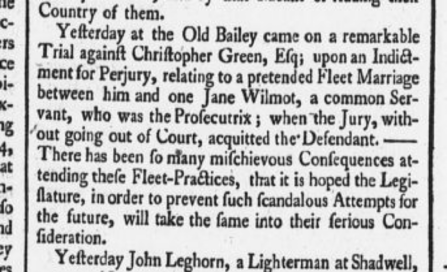Back

Collections
England, Clandestine Marriages
This collection originates from The National Archives' Register General (RG) series 7. It uncovers the details of thousands of clandestine or irregular marriages that were performed outside of the Anglican Church between 1667 and 1775.

- Date range
- 1667-1775
- Records
- 881,893
- Images
- 40,285
About this collection
Until Hardwick’s Law of 1754, the laws around marriage ceremonies were lax. While marriage was technically required to take place in an Anglican church, those performed outside such a church were still recognised and categorised as common law marriages.
There are a number of reasons why individuals would have participated in these ceremonies. The couple may have wanted to be married in secret and away from their home. There may have been a reason that the marriage needed to be performed quickly. A clandestine marriage also cost far less than a traditional wedding. However, not all reasons were innocent, and the courtrooms heard many cases of people coerced or forced into a marriage or cases of bigamy. At this time, the age required for marriage was 14 for men and 12 for women.
Most of the registers, notebooks, and volumes come from the Fleet area. London’s Fleet Prison was located beside the River Fleet. At the time these records were created, the prison was home to debtors and bankrupts. Prisoners were responsible for paying for their room and food in prison, but they could also pay extra to live outside the prison walls. The area around the prison was known as ‘Rules of Fleet’ or the ‘Liberty of the Fleet’. It was a ruthless and lawless area. Among the many inmates were clergymen who took the opportunity to charge for performing clandestine marriages. Houses and taverns set up rooms for these ceremonies and took a fee for the use of the space. The individual clergymen kept their own notebooks and registers of the marriages performed.
- The National Archives, Kew, London, UK
Try the Social History Archive.